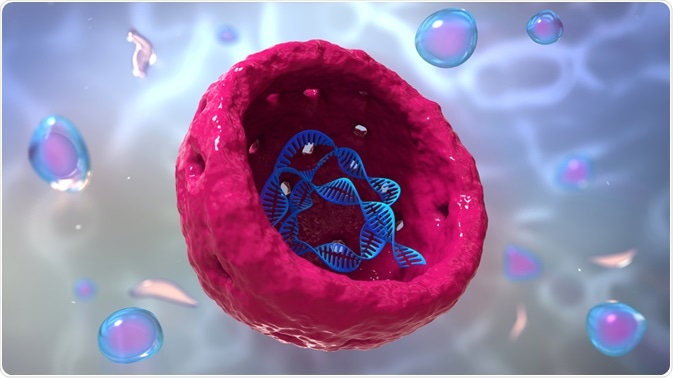ChIP-seq, or chromatin immunoprecipitation and sequencing, is a technique that allows researchers to understand transcriptional regulation via mapping of protein-DNA interactions and epigenetic markers on a genome-wide scale. ChIP-seq has several advantages over previous methods, such as ChIP-chip, but like all techniques, ChIP-seq has its limitations.
 urfin | Shutterstock
urfin | Shutterstock
ChIP-seq
ChIP-seq was one of the first applications of next generation sequencing, which was developed in the mid-2000s. Its precursor, the ChIP-chip, involved analysis of fragments via hybridization to a microarray, which showed the DNA-protein interactions. ChIP-seq, using next generation sequencing, can directly sequence the target fragments rather than hybridizing them on arrays.
In short, ChIP-seq involves treating cells with formaldehyde to crosslink binding proteins to DNA in vivo. Chromatin is then sheared using sonication into smaller fragments in the range of 200-600 bp.
Antibodies specific to the target protein are used to immunoprecipitate the DNA-protein complex. The last step involves reversal of the crosslinks and release of DNA, which is sequenced on any next-generation platform to identify the sequences bound by the protein.
Advantages of ChIP-seq
Compared to the ChIP-chip, ChIP-seq technology enables resolution at the single base pair level, fewer artifacts, improved coverage, and larger dynamic range. Excellent base-pair resolution is one of the most significant advantages, because arrays have fundamental uncertainty in the hybridization process which limits the resolution. While the resolution for ChIP-chip varied by arrays but was generally in the range of 30-100 bp, ChIP-seq has single nucleotide resolution.
Bypassing the hybridization process has additional benefits for ChIP-seq. During ChIP-chip’s hybridization process there may be cross-hybridization between imperfectly matched sequences, which adds to signal noise. ChIP-seq is intrinsically immune to such sources of noise due to the direct sequencing method. However, it is possible to receive some GC-bias using ChIP-seq.
ChIP-seq has improved resolution compared to other methods. The array’s intensity signal may not be entirely linear, and the array’s dynamic range is limited beyond the saturation points. This leads to them being obscured in ChIP-chip, but not ChIP-seq, experiments. ChIP-seq does not have a limited dynamic range, as opposed to ChIP-chip’s lower detection limit.
The next generation sequencing technique means that the genome coverage is not restricted to the probe sequences fixed on the array. Repetitive genome regions, such as heterochromatin or microsatellites, are usually masked out on arrays, but can be analyzed effectively using ChIP-seq.
ChIP-seq has further benefit over ChIP-chip with respect to sample quantity, as smaller amounts are needed for ChIP-seq. ChIP-seq generates a more precise list of protein binding sites and targets of transcription factors, enhancers, and identification of sequence motifs. Nucleosome positioning and post-translational modifications of chromatin and histone variants can be analyzed using ChIP-seq. Such analysis especially benefits from enhanced spatial resolution.
Limitations of ChIP-seq
The primary limitations of ChIP-seq is access and cost. Costs can be mitigated by researchers developing their own protocols for constructing libraries, but the overall price must still be further minimized to be comparable to other methods. ChIP-chip techniques cost around 400-800 USD per array, in comparison to ChIP-seq costs 1,000-2,000 USD per lane (for one such next generation platform).
Because ChIP-seq makes use of antibodies in immunoprecipitation, the quality of the data relies on the quality of the antibody. Several commercially available antibodies vary widely in quality, not just between suppliers but also between batches. Antibody quality can be validated, but such processes are laborious and time consuming.
The peaks in the profiles generated by ChIP-seq need to be compared to the same loci in a control sample to ascertain the significance of the peak. This is usually done with DNA prior to immunoprecipitation, treated DNA but lacking antibody, and using an antibody that has no DNA binding or chromatin modification involvement (such as IgG). This allows scientists to overcome a variety of artifacts which could have been introduced, but there is currently no consensus on which control is most appropriate, and the three methods can differ in consistency.
Sources
- https://www.ncbi.nlm.nih.gov/pmc/articles/PMC3191340/
- epigenie.com/…/
Further Reading
- All Chromatin Immunoprecipitation Sequencing (ChIP-Seq) Content
- ChIP-Seq Analysis: An Overview
- ChIP-Seq Analysis: Histone Modifications
- ChIP-Sequencing Analysis: Applications
- ChIP-seq Library Preparation
Last Updated: Feb 26, 2019

Written by
Sara Ryding
Sara is a passionate life sciences writer who specializes in zoology and ornithology. She is currently completing a Ph.D. at Deakin University in Australia which focuses on how the beaks of birds change with global warming.
Source: Read Full Article
